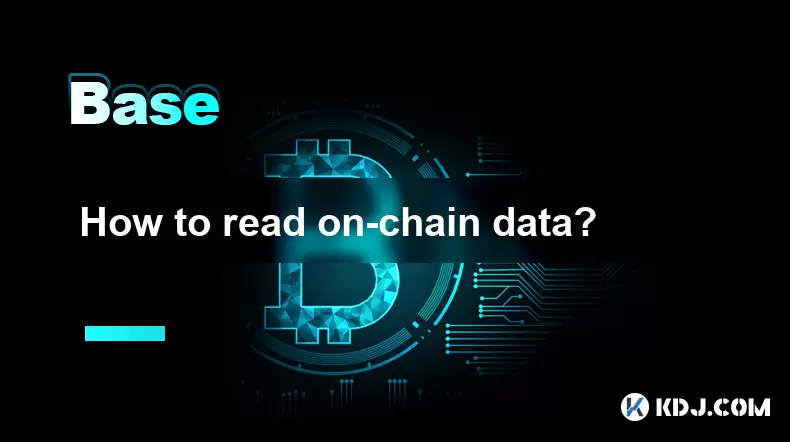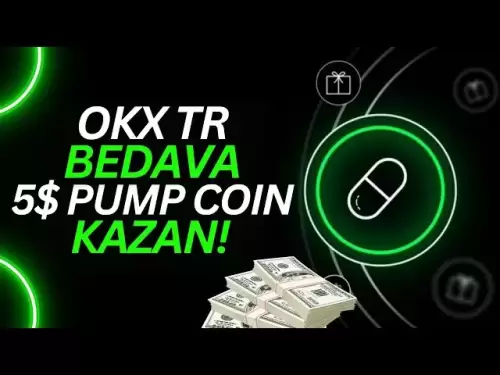-
 Bitcoin
Bitcoin $117400
-0.46% -
 Ethereum
Ethereum $3768
0.60% -
 XRP
XRP $3.551
2.09% -
 Tether USDt
Tether USDt $1.000
0.00% -
 Solana
Solana $203.2
11.30% -
 BNB
BNB $770.9
1.92% -
 USDC
USDC $0.9999
0.01% -
 Dogecoin
Dogecoin $0.2709
-0.02% -
 Cardano
Cardano $0.9024
4.49% -
 TRON
TRON $0.3139
0.60% -
 Hyperliquid
Hyperliquid $45.60
-1.41% -
 Stellar
Stellar $0.4730
-1.34% -
 Sui
Sui $4.025
2.15% -
 Chainlink
Chainlink $19.79
2.19% -
 Hedera
Hedera $0.2724
-2.39% -
 Avalanche
Avalanche $25.93
3.05% -
 Bitcoin Cash
Bitcoin Cash $524.0
-1.83% -
 Shiba Inu
Shiba Inu $0.00001558
0.50% -
 Litecoin
Litecoin $116.7
-0.30% -
 UNUS SED LEO
UNUS SED LEO $8.996
0.00% -
 Toncoin
Toncoin $3.334
1.83% -
 Polkadot
Polkadot $4.506
0.34% -
 Uniswap
Uniswap $10.99
4.83% -
 Ethena USDe
Ethena USDe $1.001
0.03% -
 Pepe
Pepe $0.00001461
3.17% -
 Monero
Monero $320.3
-1.01% -
 Bitget Token
Bitget Token $4.935
0.36% -
 Dai
Dai $0.9998
0.00% -
 Aave
Aave $322.4
-1.25% -
 Bittensor
Bittensor $455.6
9.33%
How to read on-chain data?
On-chain data offers transparent, immutable insights into blockchain transactions, wallet activity, and smart contract interactions, enabling analysis of network behavior and fund flows.
Jul 21, 2025 at 02:22 am

Understanding On-Chain Data
On-chain data refers to the information that is stored and recorded directly on a blockchain. This includes transaction details, wallet addresses, block information, smart contract interactions, and more. Unlike off-chain data, which may be stored in centralized databases or external sources, on-chain data is immutable and publicly accessible. Understanding how to interpret this data is crucial for developers, analysts, investors, and researchers who want to gain insights into blockchain activity.
To begin reading on-chain data, one must first understand the structure of a blockchain. Each block contains a list of transactions. Each transaction includes inputs, outputs, timestamps, and metadata. These transactions are cryptographically linked, ensuring data integrity.
Tools for Accessing On-Chain Data
To effectively read on-chain data, you need to use specific tools and platforms. Blockchain explorers such as Etherscan (for Ethereum), Blockchair (for multiple blockchains), and Blockchain.com (for Bitcoin) are essential. These tools allow users to search for transactions, wallet addresses, blocks, and other on-chain events.
Another category of tools includes blockchain analytics platforms, such as Glassnode, Chainalysis, and Dune Analytics. These platforms aggregate and visualize on-chain data to provide insights into network behavior, transaction trends, and wallet activity.
For developers, blockchain APIs like Alchemy, Infura, and Moralis provide programmatic access to on-chain data. These APIs allow for real-time querying of blockchain networks and can be integrated into custom applications.
Decoding Blockchain Transactions
Once you access on-chain data, the next step is to decode and interpret it. A typical blockchain transaction includes:
- Transaction hash: A unique identifier for the transaction.
- From and To addresses: The sender and receiver of the transaction.
- Value transferred: The amount of cryptocurrency sent.
- Gas fees: The cost paid to miners or validators for processing the transaction.
- Timestamp: The time when the transaction was confirmed.
- Contract interaction: Whether the transaction involved a smart contract.
Understanding these fields helps in tracing fund flows, identifying suspicious activity, and analyzing network congestion. For example, a high number of pending transactions or elevated gas fees might indicate network stress.
Interpreting Wallet Activity
Analyzing wallet addresses is a key aspect of reading on-chain data. Public wallets can be explored to see their transaction history, balance, and interactions with other addresses or contracts.
Tools like Etherscan allow users to input a wallet address and view:
- Balance history
- Incoming and outgoing transactions
- Token transfers
- Smart contract interactions
- Internal transactions
This information is especially useful for tracking large holders (commonly known as "whales") or monitoring exchange deposits and withdrawals. By observing patterns in wallet activity, analysts can infer market sentiment or detect potential market manipulation.
Using Dune Analytics for Advanced On-Chain Analysis
For more advanced users, Dune Analytics provides a SQL-based interface to query and visualize on-chain data. It allows users to create dashboards, build custom queries, and explore datasets curated by the community.
To use Dune Analytics:
- Create an account and log in.
- Select a blockchain (e.g., Ethereum, Polygon, Optimism).
- Write or import a SQL query to extract specific data.
- Visualize the results using charts, tables, or maps.
- Share or publish your dashboard for others to use.
This platform is particularly useful for tracking DeFi protocols, NFT activity, and tokenomics. For instance, you can create a query to monitor the total value locked (TVL) in a decentralized exchange or track the distribution of a new token.
Reading Smart Contract Interactions
Smart contracts are self-executing agreements with the terms written in code. Reading on-chain data related to smart contracts involves understanding how they are triggered and what functions they execute.
To interpret smart contract interactions:
- Use a blockchain explorer to find the transaction that interacted with a contract.
- Check the contract address and verify its source code (if verified).
- Review the transaction logs and event emissions to understand what functions were called.
- Look at the input data field, which often contains encoded function calls and parameters.
For example, when a user interacts with a decentralized application (dApp), the transaction may trigger a function like swap() on a decentralized exchange contract. By decoding the input data, you can see the exact parameters, such as the token being swapped and the amount.
Frequently Asked Questions
Q: Can on-chain data be altered or deleted?
No, on-chain data is immutable once it has been confirmed by the network. This immutability ensures the integrity and transparency of blockchain systems.
Q: Is all on-chain data public?
Most blockchains are transparent, meaning anyone can view transactions and addresses. However, some blockchains like Monero or Zcash offer enhanced privacy features that obscure transaction details.
Q: How do I know if a wallet address is associated with an exchange?
Certain tools and databases, such as Chainalysis or Whale Alert, label known exchange addresses. You can also compare addresses with publicly known exchange deposit addresses.
Q: Are there risks in interpreting on-chain data incorrectly?
Yes, misinterpreting data can lead to incorrect conclusions. For example, assuming an address belongs to a single user when it might be a multi-signature wallet or part of a larger system. Always cross-reference data from multiple sources.
Disclaimer:info@kdj.com
The information provided is not trading advice. kdj.com does not assume any responsibility for any investments made based on the information provided in this article. Cryptocurrencies are highly volatile and it is highly recommended that you invest with caution after thorough research!
If you believe that the content used on this website infringes your copyright, please contact us immediately (info@kdj.com) and we will delete it promptly.
- MoonBull's Whitelist Mania: Your Last Shot at 100x Crypto Gains?
- 2025-07-22 10:30:12
- Meme Coins in 2025: Explosive Gains or Fading Fad?
- 2025-07-22 10:30:12
- Kim Keon-hee Crypto Probe: Scandal Rocks South Korea's Political Scene
- 2025-07-22 10:50:12
- ETH Holders in Profit: Value Surge Fuels Bullish Sentiment
- 2025-07-22 09:30:13
- NEAR Protocol's AI Leap: Double-Digit Gains and Future Potential
- 2025-07-22 09:30:13
- Cryptos, Meme Coins, Buy Now: Riding the Wave of Hype
- 2025-07-22 08:30:13
Related knowledge

What is the difference between CeFi and DeFi?
Jul 22,2025 at 12:28am
Understanding CeFi and DeFiIn the world of cryptocurrency, CeFi (Centralized Finance) and DeFi (Decentralized Finance) represent two distinct financia...

What is the difference between a sidechain and a Layer 2?
Jul 20,2025 at 11:35pm
Understanding the Concept of SidechainsA sidechain is a separate blockchain that runs parallel to the main blockchain, typically the mainnet of a cryp...

What is the Inter-Blockchain Communication Protocol (IBC)?
Jul 19,2025 at 10:43am
Understanding the Inter-Blockchain Communication Protocol (IBC)The Inter-Blockchain Communication Protocol (IBC) is a cross-chain communication protoc...

How does sharding improve scalability?
Jul 20,2025 at 01:21am
Understanding Sharding in BlockchainSharding is a database partitioning technique that is increasingly being adopted in blockchain technology to enhan...

What is the "crypto trilemma" of scalability, security, and decentralization?
Jul 19,2025 at 06:28pm
Understanding the Concept of the Crypto TrilemmaThe crypto trilemma refers to the challenge of simultaneously achieving scalability, security, and dec...

What is a cliff and vesting schedule in tokenomics?
Jul 20,2025 at 10:28am
What Does a Cliff Mean in Tokenomics?In tokenomics, a cliff refers to a specific period during which token holders are not allowed to access or transf...

What is the difference between CeFi and DeFi?
Jul 22,2025 at 12:28am
Understanding CeFi and DeFiIn the world of cryptocurrency, CeFi (Centralized Finance) and DeFi (Decentralized Finance) represent two distinct financia...

What is the difference between a sidechain and a Layer 2?
Jul 20,2025 at 11:35pm
Understanding the Concept of SidechainsA sidechain is a separate blockchain that runs parallel to the main blockchain, typically the mainnet of a cryp...

What is the Inter-Blockchain Communication Protocol (IBC)?
Jul 19,2025 at 10:43am
Understanding the Inter-Blockchain Communication Protocol (IBC)The Inter-Blockchain Communication Protocol (IBC) is a cross-chain communication protoc...

How does sharding improve scalability?
Jul 20,2025 at 01:21am
Understanding Sharding in BlockchainSharding is a database partitioning technique that is increasingly being adopted in blockchain technology to enhan...

What is the "crypto trilemma" of scalability, security, and decentralization?
Jul 19,2025 at 06:28pm
Understanding the Concept of the Crypto TrilemmaThe crypto trilemma refers to the challenge of simultaneously achieving scalability, security, and dec...

What is a cliff and vesting schedule in tokenomics?
Jul 20,2025 at 10:28am
What Does a Cliff Mean in Tokenomics?In tokenomics, a cliff refers to a specific period during which token holders are not allowed to access or transf...
See all articles

























































































